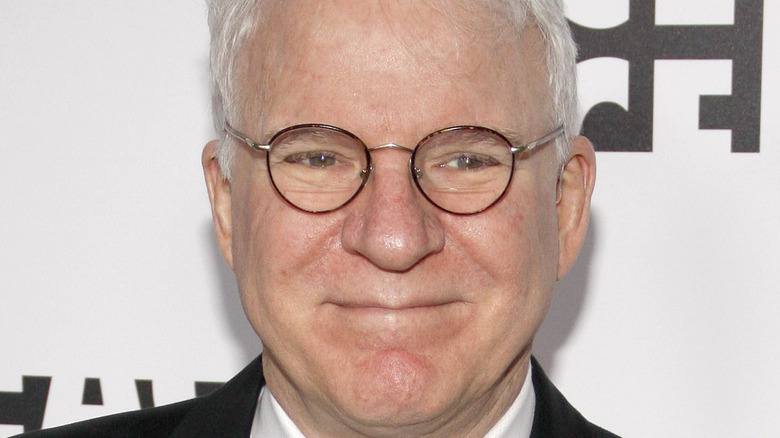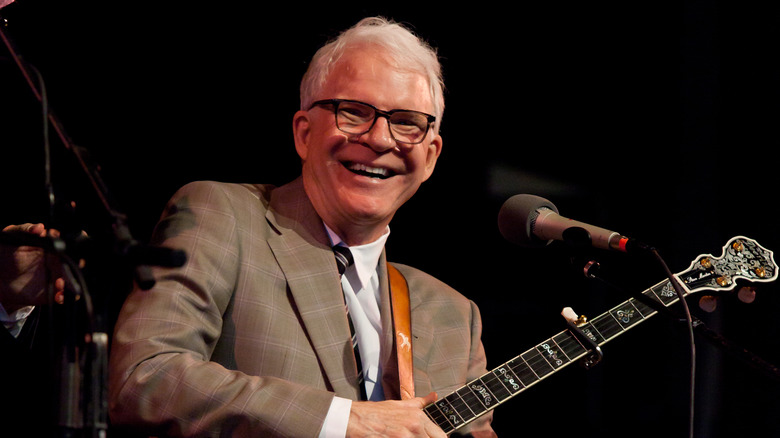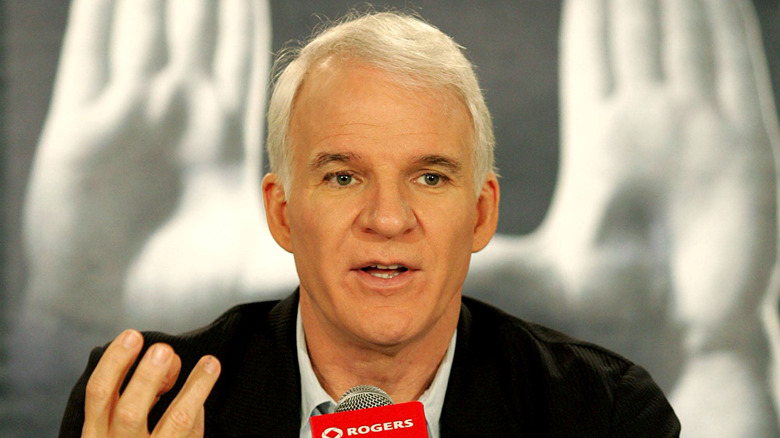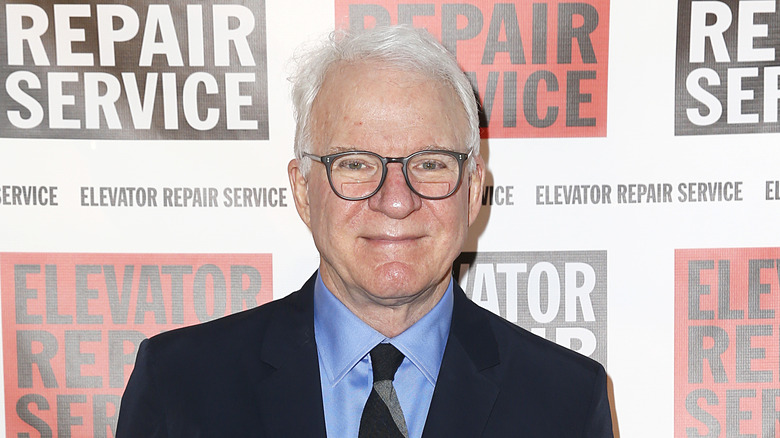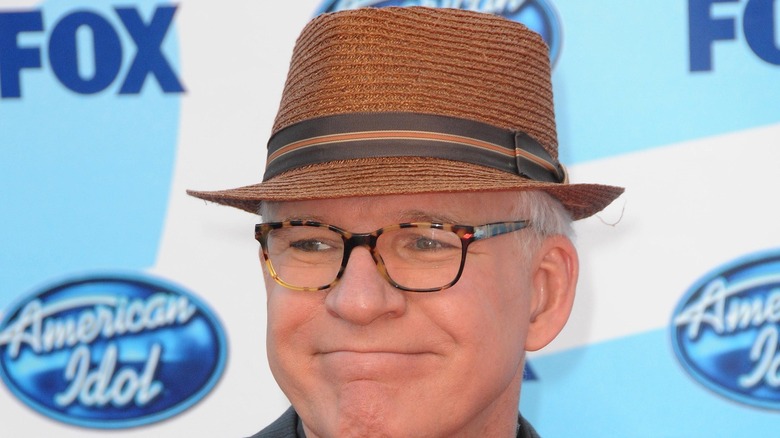What You Didn't Know About Steve Martin's Art Collection
Steve Martin has been known for many things throughout his career. When the history of 20th- and 21st-century performers is documented, it's likely that the words "comedian" and "actor" will be in the first sentence when Martin's story is written. However, he's also an accomplished essayist, novelist and playwright, a virtuoso banjo player, and an outspoken atheist, according to HuffPost.
Martin is also an avid art collector, having taken up the hobby early in his career. It was something that he kept more or less a secret until he spilled the beans, so to speak, with an exhibition in Las Vegas in 2001. Even then, however, he was reluctant to portray himself as a serious art collector.
”I didn't want these works to be perceived as vehicles for publicity or to be treated as commercial objects used to promote an 'image,”' he said at the time, via The New York Times. And indeed, reviewers who have attended his exhibitions have been limited in their praise, recognizing the worthy pieces in his collection while openly regretting its exclusions.
This is what you didn't know about Steve Martin's art collection.
Steve Martin kept his collection more or less a secret for decades
Martin purchased his first painting, by Los Angeles artist Ed Ruscha, in 1968, according to The New York Times. At the time, Martin was in his early 20s, and his career was just starting to take off.
Over the decades, his collection not only got bigger, it also started including more recognizable names: Seurat, Picasso, and Robert Crumb. Some of his pieces have come and gone from his collection over the years as well.
Martin has been clear, in conversations with journalists covering his exhibitions as well as with the general public in attendance, that he is by no means a serious art collector with a view toward curating a collection that would rival those of any other serious art collector. Rather, he says that his paintings are nothing more than ”some nice paintings to hang on my walls.”
When he finally revealed a glimpse into his collection, for an exhibition of fine art at Las Vegas' Bellagio Hotel, he continued to insist that he was doing it not for credibility as a serious art collector but as just a guy who had collected some art that he liked; nothing more, nothing less.
"[It] sounded 'like fun,'" Martin said of his Bellagio exhibition at the time.
Art critics are only mildly impressed with his collection
For the 2001 Bellagio exhibition, Martin made it clear to his host, to attendees, and to journalists covering the event that his art collection was just random stuff that he liked and not an expertly- or professionally-curated collection meant to impress the art world.
Art critic Grace Glueck, reviewing Martin's Bellagio exhibit for The New York Times, effectively said that Martin didn't promise much, and that he delivered exactly what he promised.
"The collection is uneven ... and it lacks focus. In fact, its scattershot quality might lead one to believe that Mr. Martin is very much an impulse buyer," Glueck wrote, noting that his exhibit contained a few worthwhile pieces by 20th-century masters, and a bunch of other seemingly random stuff. She also mourned the lack of diversity in his collection; it was almost all paintings and included no sculpture nor other media.
San Francisco Chronicle art critic David Bonetti was slightly more kind, writing that "Martin comes across as an inspired amateur, in the best sense of the word," noting, as Glueck did, that his collection lacks abstract pieces as well as sculpture and photography.
Martin once sold a piece for a record amount of money
Art is notoriously volatile as an investment, with prices of various pieces rising and falling with the ever-changing market for fine art. And Steve Martin was a beneficiary of that volatility, having once made a $16 million profit from selling one of his paintings.
Martin's collection has largely favored American painters, and in 1999, according to The New York Times, the actor paid "around" $10 million for "Hotel Window" by American painter Edward Hopper. Seven years later, in 2006, Martin sold the painting for $26.89 million, according to Bloomberg, in the process setting a record price for a Hopper sold at auction. The piece was sold to an anonymous buyer.
Whoever purchased the piece wound up losing mountains of money on the transaction, however. In October 2020, according to Art News, that same painting sold for a mere $1.3 million, possibly a victim of decreased demand for fine art due to the financial ravages of the coronavirus pandemic.
Martin was once bamboozled by an art forgery
Besides market volatility and the prospect of losing millions on a bad purchase, the world of collecting fine art is also bedeviled by another nefarious influence: forgeries. And Steve Martin wasn't spared, as he, too, was the victim of an art forgery.
Specifically, as The Guardian reported, he purchased "Landscape with Horses," by German-Dutch modernist Heinrich Campendonk, from a Paris gallery in 2004. At least, that's what he thought he was buying. What he actually bought was a forgery; it would later be revealed that the painting was produced by a German forgery gang, the members of which had produced forgeries that had fooled multiple art experts, and who had been arrested.
As for Martin, he'd purchased the painting for $850,000 and then sold it at a loss, for $500,000, a couple of years later, to a Swiss businesswoman. At one time, he was even concerned that he would be forced to compensate the buyer for the fake.
"The gallery that sold me the picture has promised to be responsible to me, if I'm responsible, but it's still unclear," Martin said.
